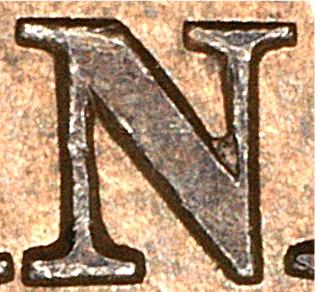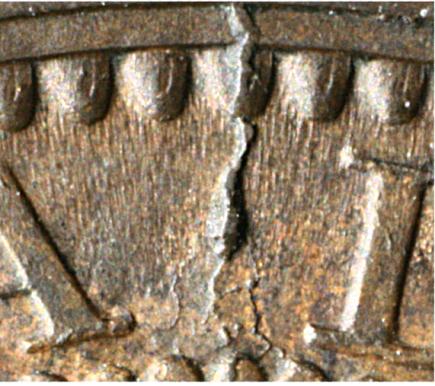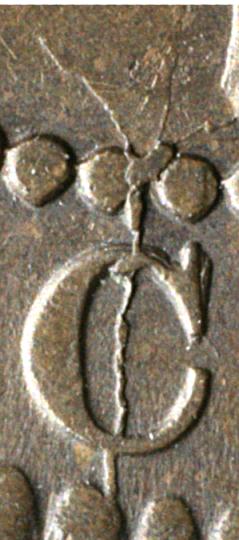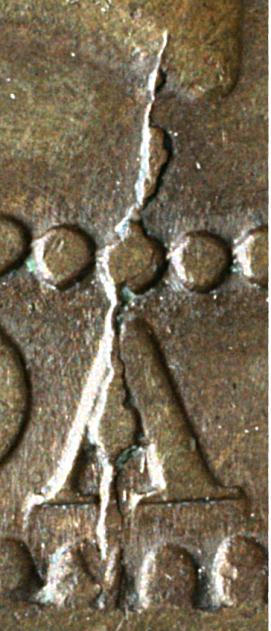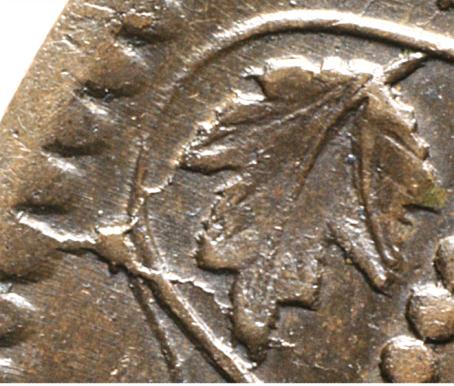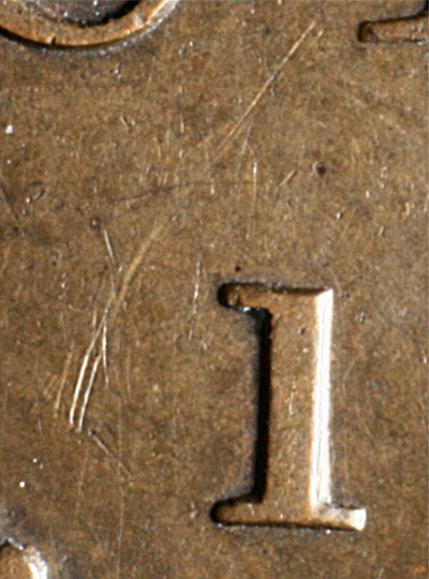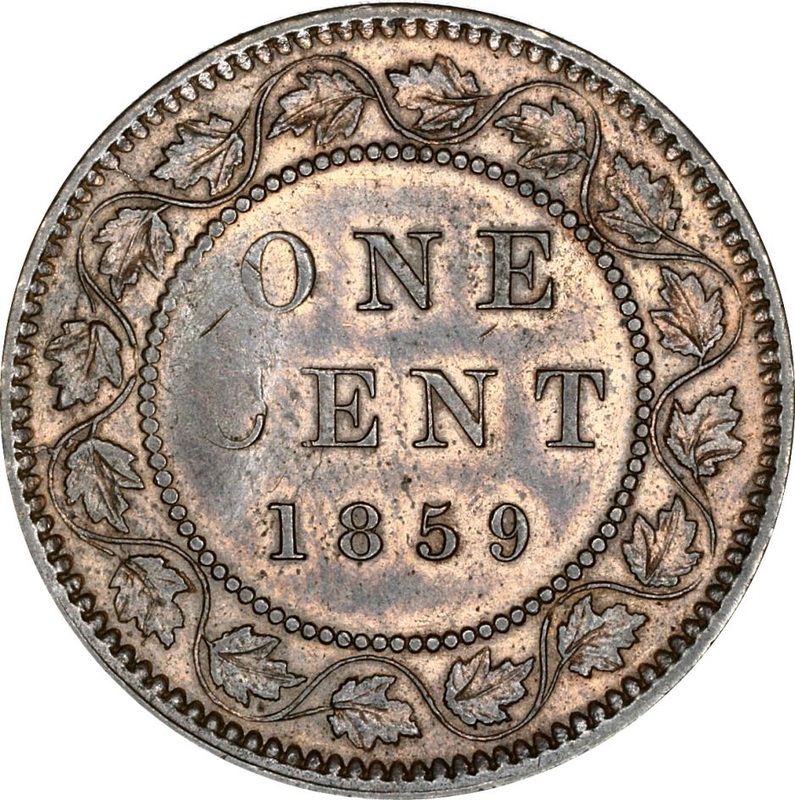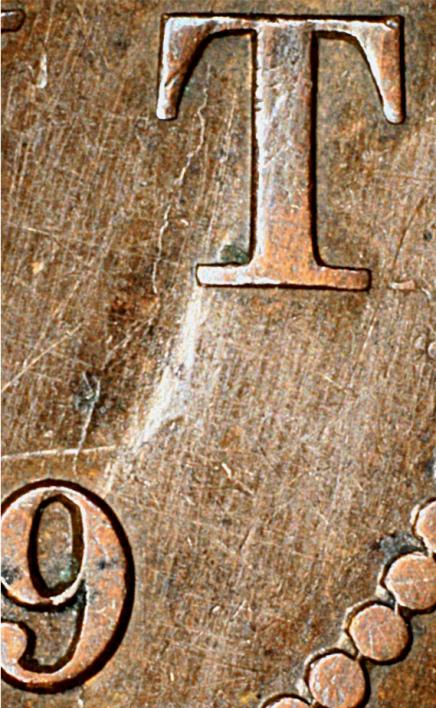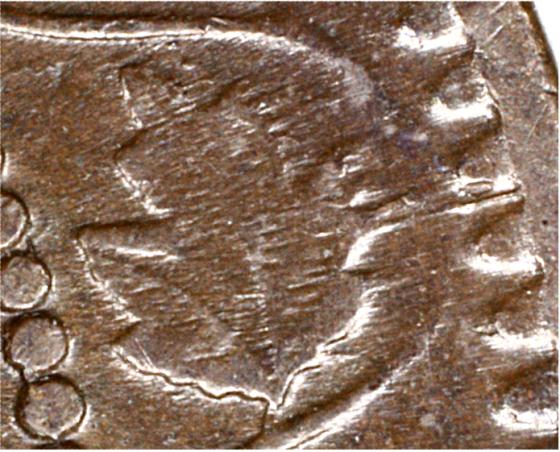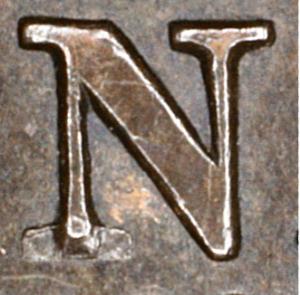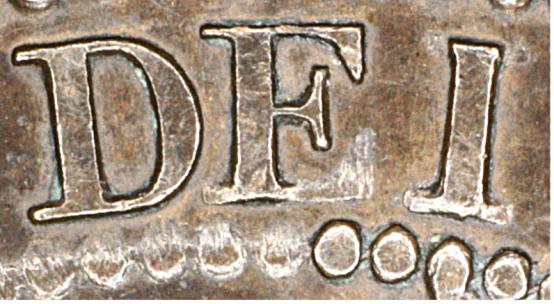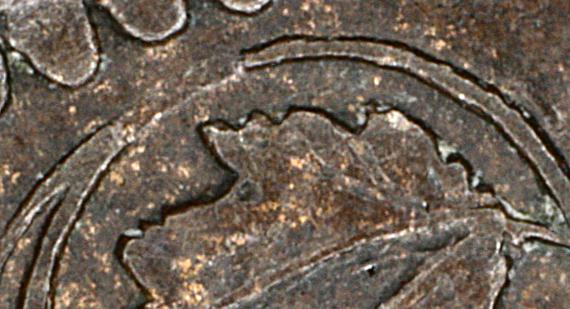SECTION EIGHT
DIE FEATURES THAT APPEARED DURING STORAGE & USE - Part 2
Die Cuds
A die cud is a raised area on a coin resulting from a piece fracturing off the die that struck it. Die cuds can occur along the edge (where they can be quite large) or in some internal area. Die cuds along the edge of a Province of Canada cent are seldom seen, but small cuds on internal areas are fairly common. Internal cuds could form between any two parts of the design that are in close proximity, e.g. a leaf and vine or a letter and the beaded circle. Most often, though, they form along die cracks. One feature that looks like a die cud is a bridge between the G of REGINA and the beaded circle. It’s actually a “red herring”, for every Provincial cent die we’ve encountered has it. That can only mean it was present on the obverse punch and thereby passed to every die sunk from it.
Examples of die cuds not associated with die cracks
Examples of die cuds associated with die cracks
Die Clashes
The process by which clash marks arise has long been known to collectors: when the dies come together in the absence of a blank, the opposing surfaces come into direct contact and can mark each other. Partial outlines of letters, the portrait and the loops and leaves of the maple wreath can appear on the opposite side of the coin.
Die clashes are very common on Province of Canada cents. One can take advantage of clash marks in die identification, particularly when they are pronounced.
Die clashes are very common on Province of Canada cents. One can take advantage of clash marks in die identification, particularly when they are pronounced.
It is not unusual to see multiple clash marks, slightly displaced from each other. The origin of this appears to be that one member of a pair of dies could come loose and gradually rotate. This is most commonly seen with the Queen’s profile clash marks on the reverse.
In some cases clash marks reached spectacular proportions, as seen with the multiple impressions of the reverse wreath showing among CANADA.
Multiple deep clash marks of the maple wreath on the obverse
Die Collapses and Other Surface Distortions
A die collapse is a phenomenon primarily seen to the Province of Canada cent, usually, though not exclusively, restricted to the reverse. Die collapses are manifested on the coins as oval-shaped raised areas, of which there can be as many as three on a single reverse. A large collapse can cover up to 20% or more of the surface.
There are numerous examples of 1859 N9 dies where one can follow the progression from a perfectly flat die to slight collapse to major collapse. With a well-developed collapse the wear of detail like letters, leaves or beads in the highest areas on the coin surface (the deepest areas in the die) can be greatly accentuated.
One assumes collapses are due to the compression of air pockets or pockets of contaminants in the die steel. Whatever their cause, collapses are another useful tool at our disposal for identifying individual dies.
There are numerous examples of 1859 N9 dies where one can follow the progression from a perfectly flat die to slight collapse to major collapse. With a well-developed collapse the wear of detail like letters, leaves or beads in the highest areas on the coin surface (the deepest areas in the die) can be greatly accentuated.
One assumes collapses are due to the compression of air pockets or pockets of contaminants in the die steel. Whatever their cause, collapses are another useful tool at our disposal for identifying individual dies.
Die Wear
Some dies were continued in use so long that they experienced significant wear. The first sign of wear is the formation of tiny radial striations in the field (left-hand panel below). Later the design elements began to show serious loss of detail (right-hand panel). Leaves can lose most of their internal detail and the outside loops begin to appear to be broken or missing.
Planchet Laminations and Planchet Cracks
There are two phenomena, both involving problems with individual planchets, that can look like die cracks at first glance. The first is planchet laminations, in which parts of the planchet surface separate and sometimes peel off. The second is planchet cracks, where the crack begins at the edge, comes in a short distance and runs right through to the other side of the planchet.
Die Clogs
The final feature in this overview is different from the others in that it is not permanent. Die clogs result from material getting into recessed parts of the die (typically letters, digits or beads) and preventing those parts of the design from fully striking up. Clogs most often involve serifs, crossbars, arches or other parts of letters in the obverse legend. Less commonly, they affect the reverse. There one sometimes sees clogged parts of the date and in one rare case one of the vine loops (Loop 16) was briefly clogged.
Interestingly, some dies can have a clog, which can fully or partially clear and then get a second, different, clog. Whether the disappearance of clogs was due to spontaneous clearing or to manual clearing by the pressman is not certain. Perhaps both occurred. In any case, clogs can sometimes be helpful in the identification of otherwise featureless dies.
Interestingly, some dies can have a clog, which can fully or partially clear and then get a second, different, clog. Whether the disappearance of clogs was due to spontaneous clearing or to manual clearing by the pressman is not certain. Perhaps both occurred. In any case, clogs can sometimes be helpful in the identification of otherwise featureless dies.
